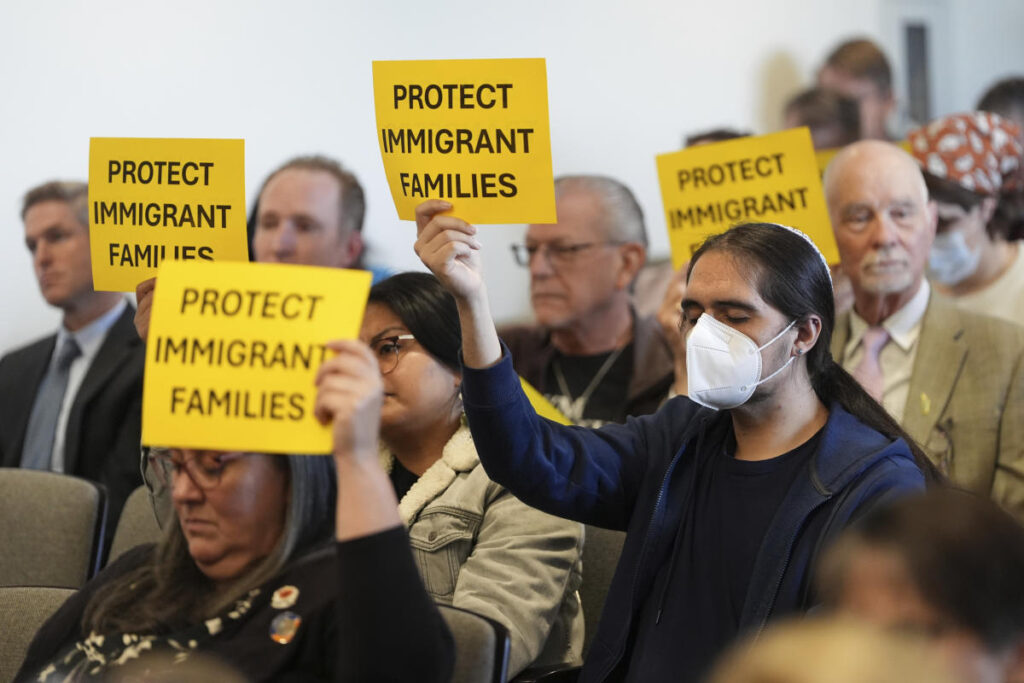In a significant political clash in San Diego County, Sheriff Kelly Martinez openly defied a new policy aimed at limiting local law enforcement’s cooperation with federal immigration authorities. This policy was passed by the San Diego County Board of Supervisors, which is composed of predominantly Democratic members, including Nora Vargas. The measure seeks to prohibit the sheriff’s department from engaging with U.S. Immigration and Customs Enforcement (ICE) on civil immigration enforcement, especially regarding deportations. The backdrop of this conflict is the broader immigration landscape in the United States, particularly in the context of incoming President Donald Trump’s aggressive deportation strategy, which hinges on local law enforcement’s collaboration with federal agencies.
Sheriff Martinez argued that she would not adhere to the new policy, stating that the board does not dictate her department’s operational policies. She positioned her stance based on current California law, which, while generally limiting cooperation with federal immigration enforcement, does permit exceptions for individuals convicted of specific violent crimes. Martinez contended that the existing state regulations already strike a balance between restricting local law enforcement’s immigration collaboration, ensuring public safety, and fostering trust within the community. The tensions reveal differing attitudes within the county regarding immigration enforcement, with some officials prioritizing community trust and protections for undocumented residents, while others, like Board member Jim Desmond, express concern over public safety risks, stemming from what they label as “sanctuary” laws.
The San Diego County supervisors’ decision aligns the county with seven other California jurisdictions, including the largest county in the nation, Los Angeles, which has recently passed similar measures. This movement toward enhanced protections for undocumented individuals is notable as it contrasts sharply with some other states that are preparing to bolster support for Trump’s anticipated deportation agenda. This divergence showcases a complex patchwork of immigration policies at the local and state levels, particularly in a border community like San Diego, which has a large population of residents—approximately 3.3 million—living in proximity to Mexico and often engaging in cross-border activities.
Sheriff Martinez’s refusal to comply with the board’s directive puts her in a contentious position as Trump’s administration prepares to implement its immigration policy framework. Tom Homan, who served as Trump’s point person on border issues, has publicly condemned local sanctuary laws, including those in San Diego, stating that they compromise community safety by limiting ICE’s ability to access local jails. Homan highlighted the importance of county sheriffs in facilitating the federal deportation process, suggesting that local policies could hinder the federal government’s capacity to enforce immigration laws effectively. The disconnect between local policies and federal enforcement objectives continues to challenge the administration’s broader immigration strategy.
This ongoing conflict raises essential questions about the implications of sanctuary laws on community safety and public perception. Opponents of such protections, like Desmond, argue that these policies ultimately shield individuals involved in criminal activity from accountability, contributing to public safety risks. The mention of high-profile incidents, such as the shooting death of Kate Steinle in San Francisco by an undocumented immigrant, is frequently cited by critics to argue for the necessity of cooperation with immigration authorities. However, proponents like Vargas assert that local law enforcement should not act as an extension of federal immigration enforcement, emphasizing that fear of deportation can deter victims and witnesses from reporting crimes or seeking justice.
As this debate unfolds, the San Diego County situation reflects a larger national conversation about immigration enforcement, community trust, and local versus federal authority. The contrast between the perspectives of local officials and federal immigration authorities encapsulates the challenges of managing immigration policy amidst deeply held beliefs about human rights and public safety. The future of cooperation between local law enforcement and federal immigration agencies remains uncertain, particularly as the political landscape continues to evolve. Local governments across the country will have to navigate competing priorities, balancing the need for community safety with the imperative of protecting the rights of vulnerable populations within their jurisdictions.

